Oddworld is a video game series and fictional universe, created by developers Oddworld Inhabitants under the direction of Lorne Lanning. The series has been released on various platforms such as PlayStation, Xbox, PlayStation 3, Game Boy, Windows, and Wii U, among others.

Oddworld: Abe's Oddysee is a platform video game developed by Oddworld Inhabitants and published by GT Interactive. It was released in 1997 for the PlayStation game console, and computers running MS-DOS and Windows. A Game Boy version was released as Oddworld Adventures in 1998.

Oddworld: Abe's Exoddus is a platform video game developed by Oddworld Inhabitants and published by GT Interactive. Although the game is a sequel to the video game Oddworld: Abe's Oddysee, it is considered a spin-off title in the Oddworld series, and not part of the Oddworld Quintology. It was released in November 1998 for the PlayStation video game console and in December 1998 for Microsoft Windows. A Game Boy Color version, titled Oddworld Adventures 2, was released in 2000. The PlayStation version was re-released on the PlayStation Network in October 2009.

Oddworld: Munch's Oddysee is a 2001 video game, released for the Xbox. It is the third game made by Oddworld Inhabitants, the second chapter of the Oddworld Quintology, following Abe's Oddysee, and the third overall Oddworld game.
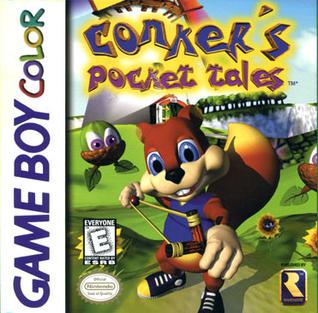
Conker's Pocket Tales is a 1999 action-adventure game developed and published by Rare for the Game Boy Color. It is the first game in the Conker series and follows the story of Conker the Squirrel as he retrieves his stolen birthday presents and rescues his girlfriend Berri, who has been kidnapped by the Evil Acorn. The cartridge is dual-format, allowing it to also run on the original Game Boy with some gameplay differences.
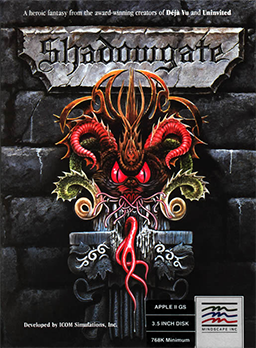
Shadowgate is a point-and-click adventure game developed by ICOM Simulations and published in 1987 for the Macintosh as part of the MacVenture series. The game takes place in the Castle Shadowgate, residence of the evil Warlock Lord. The player, as the "last of a great line of hero-kings", is tasked with saving the world by defeating the Warlock Lord, who is attempting to summon the demon Behemoth out of Hell. The original Macintosh version was only in black-and-white, but color versions of the game were later released for the Amiga and Atari ST, and in 1989 for the Nintendo Entertainment System. The game was generally well-received, and was followed by several sequels and remakes for various systems.
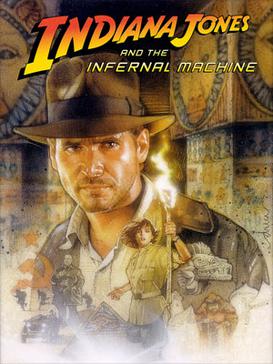
Indiana Jones and the Infernal Machine is an action-adventure video game by LucasArts released in 1999. The first 3D installment in the series, its gameplay focuses on solving puzzles, fighting enemies, and completing various platforming sections. The story is set in 1947, after the events of Indiana Jones and the Iron Phoenix, and puts the eponymous protagonist, the adventurer Indiana Jones, against the Soviet Union. In a race for a mythological Babylonian power source, he joins forces with the Central Intelligence Agency and collects four pieces of the Infernal Machine, an ancient device that allegedly opens a portal to another dimension.

Star Wars: Yoda Stories is a 1997 adventure video game based on the Star Wars franchise developed by LucasArts. The game is the second and last title in LucasArts' Desktop Adventures series, preceded by Indiana Jones and His Desktop Adventures. The game was released in March 1997 for Microsoft Windows and ported to Game Boy Color by Torus Games in December 1999.

Tonic Trouble is a 1999 action-adventure game developed by Ubi Soft Montreal and published by Ubi Soft. The game follows janitor Ed, who drops a container of unidentified fluid from his spaceship to Earth, transforming the planet into a mutated version of itself. Drunkard Grögh drinks from the container and is granted powers that lead him to conquer Earth. Assuming the role of Ed, the player is tasked with solving puzzles and defeating enemies to acquire the tools to conquer Grögh and repossess the container to create an antidote.

Jimmy Neutron vs. Jimmy Negatron is a video game for Microsoft Windows and Game Boy Advance. In the game, the player plays as Jimmy Neutron as he tries to stop his evil doppelganger, Jimmy Negatron, from his evil deeds. It was published by THQ and Nick Games and developed by AWE Games (PC) and Human Soft (GBA). The PC version contains a demo for SpongeBob SquarePants: Employee of the Month which was released around the same time.

Hercules: The Legendary Journeys is a 2000 action adventure game, based off the television series of the same name, developed by Player 1 and published by Titus Interactive for the Nintendo 64. The player controls Hercules and his friends, Iolaus and Serena, on a quest to free Zeus from the forces of Ares and Hera.

Oddworld: New 'n' Tasty! is a 2014 cinematic platform video game developed by Just Add Water and published by Oddworld Inhabitants as a "ground-up remake" of Oddworld: Abe's Oddysee. The game was released in North America on 22 July 2014 and in Europe on 23 July 2014 for the PlayStation 4. The title was also released for Linux, Microsoft Windows, OS X, Xbox One, PlayStation 3, PlayStation Vita, and Wii U. It has been ported on iOS and Android and released worldwide on 14 December 2017. A Nintendo Switch version was released on 27 October 2020.
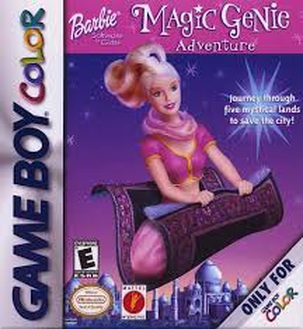
Barbie: Magic Genie Adventure is a single-player adventure/action game developed by Vicarious Visions and published by Mattel Interactive. It was released on the Game Boy Color on November 1, 2000.

Oddworld: Soulstorm is a 2021 platform game developed and published by Oddworld Inhabitants. The game is the sequel to 2014's Oddworld: New 'n' Tasty! and a re-imagining of 1998's Oddworld: Abe's Exoddus as it was originally envisioned. It was released for PlayStation 4, PlayStation 5, and Windows in April 2021, with an enhanced edition released in November 2021, alongside versions for Xbox One and Xbox Series X/S. A port for Nintendo Switch, subtitled Oddtimized Edition, was released in November 2022. It received mixed reviews from critics.

Babe and Friends is a 1999 Game Boy Color game developed by Aqua Pacific Ltd, based upon the 1995 film Babe.

Jim Henson's Muppets is a 2000 platform game, based on The Muppets franchise, developed by Tarantula Studios and published by Take-Two Interactive for Game Boy Color.

Tweety's High-Flying Adventure is a 2000 Game Boy Color game developed and published by Kemco, and is a platform game based on the 2000 Looney Tunes film of the same name.

Thunderbirds is a 2000 action game for the Game Boy Color developed by Pukka Games and published by SCi Games, licensed from the Thunderbirds franchise, released in 2001 for the Game Boy Advance as Thunderbirds: International Rescue. The game is not to be confused with the 2004 Game Boy Advance title of the same name.
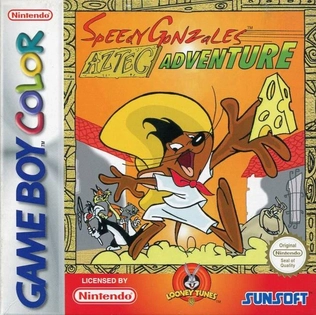
Speedy Gonzales: Aztec Adventure is a 2000 video game developed and published by SunSoft for the Game Boy Color. The game is a licensed platformer depicting the Looney Tunes animated cartoon character Speedy Gonzales, who the player controls across six stages set in Mexico. Upon release, Speedy Gonzales received average to mixed reviews, with critics praising the visual presentation of the game but faulting its platform gameplay mechanics, difficulty, and performance.

Papyrus is a 2000 platform video game developed by Planet Interactive Development and published by Ubisoft for the Game Boy Color. The game is based upon the Belgian comic book series Papyrus by Lucien De Gieter, with the player completing levels set in ancient Egypt as the titular character. Upon release, Papyrus was generally well received by critics, with praise directed to the game's visuals and animations, and criticism to its limited gameplay features and longevity.




















